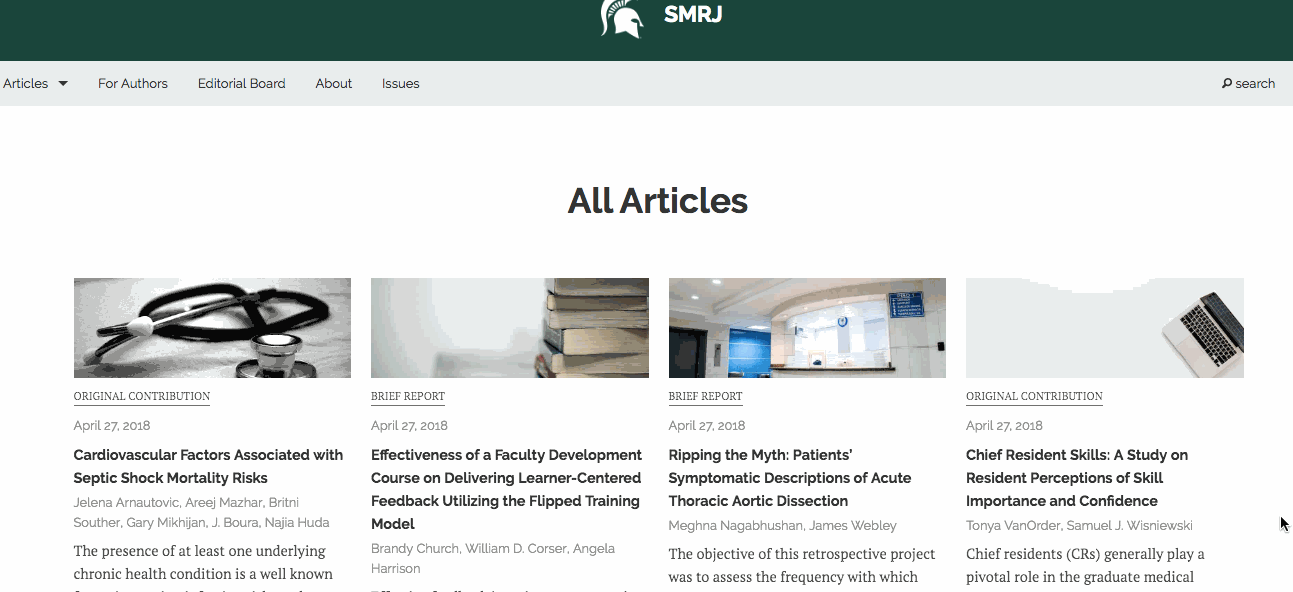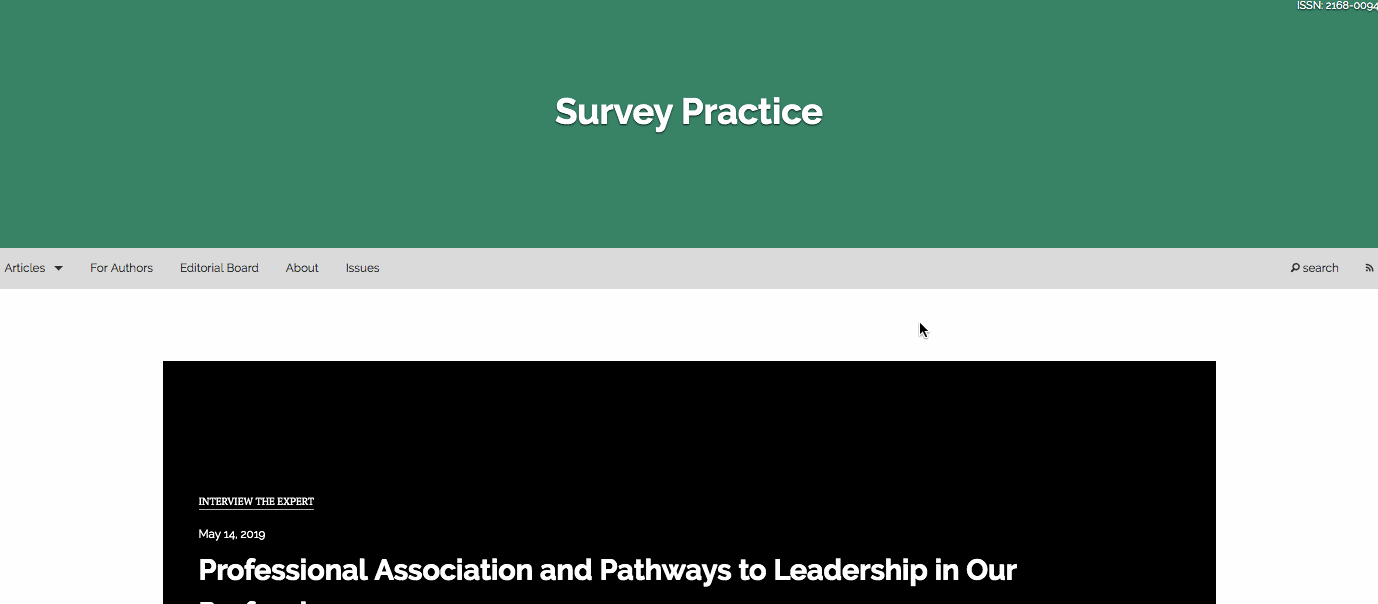
When journals rely on peer review and publishing tools that don’t connect, it can lead to workflow gaps and, consequently, publication delays — which nobody wants! That’s why aligning team members, processes, and systems is essential for any journal to operate smoothly.
At Scholastica, we get that. And we pride ourselves on helping journals close the loop between peer review and publishing. We’re constantly working to improve our easy-to-integrate modular peer review system, digital-first production service, and open access hosting platform to help journals across disciplines work more efficiently and get new research out into the world faster.
To share how Scholastica is helping journals optimize their operations, we created a collection of Customer Stories. In this blog post, we’re highlighting four stories from academic institutions and scholarly societies using Scholastica software and services to close the loop between peer review and publishing.
Bond University uses Scholastica to manage its journals in one place

Over the past 30 years, Bond University has developed a thriving journals program with a broad portfolio of faculty-run titles. At the helm is Scholarly Publications & Copyright Manager Antoinette Cass, who oversees Bond’s publishing initiatives.
One of the primary challenges Cass faced as she worked to expand Bond’s journal program over the years was trying to keep track of a patchwork of peer review and publishing tools their editors were using. It was difficult for her to know how each journal was faring and how she could best facilitate workflows within various software systems. So, in 2019, she set out to find a new way to manage and host Bond’s journals, ultimately deciding to migrate all their titles to Scholastica’s peer review system and fully-OA publishing platform.
Now, as a Scholastica admin, Cass can easily monitor editorial operations across Bond’s titles with access to peer review analytics for each journal. And their editors can import accepted manuscripts straight from Scholastica’s peer review system to our publishing platform without tedious file and metadata transfer steps like before.
“I really liked what I learnt about Scholastica. It came through as a very adaptive and well-structured platform that would do everything we needed and more,” said Cass in a Scholastica blog interview about Bond’s transition experience.
Cass uses Scholastica’s peer review system analytics to get a bird’s-eye-view of how Bond’s journals are doing overall. She checks high-level stats to assess editorial operations, including the average number of manuscripts assigned to each editor, each journal’s average time to a first manuscript decision, and average days to a decision by editor. “I really like all those touch points so I can see how everyone is traveling,” she said. “Library Services has provided the platform, and we have a vested interest in making sure all of the journals using it do well.”
Since moving to Scholastica, Cass has also been using the time she’s gained to work on initiatives to continue professionalizing Bond’s publishing program and help the journals reach a wider readership, starting with indexing. “We’ve got Google Scholar indexing now, which was a must,” said Cass. “And when I saw that Scholastica integrates with DOAJ, that was a big plus.”
SMRJ uses Scholastica to streamline peer review and produce articles in PMC-ready XML

Continuing with campus-based journal publishing examples, next, we highlight the Spartan Medical Research Journal (SMRJ), a publication outlet of the Michigan State University College of Osteopathic Medicine. For SMRJ, the decision to move to Scholastica resulted from their need to both improve the journal’s editorial workflows and meet indexing requirements.
“Relying on email and Word docs [for peer review] was getting pretty difficult,” former Assistant Editor Sam Wisniewski explained in a Scholastica blog interview. “So we started talking about ways to streamline that process. At the same time, we were getting our application ready to submit to PubMed Central for indexing, and that’s when we realized we needed XML. So it was good timing when we found Scholastica and realized it could help us with both those things.”
SMRJ migrated to Scholastica’s peer review system, digital-first production service, and fully OA hosting platform. Transitioning to Scholastica enabled the journal’s editors to streamline their peer review and publishing operations, saving the team time. It also helped them improve the experience of their submitting authors and reviewers.
Additionally, moving to Scholastica helped the SMRJ team reach their long-term discovery goal of getting into PubMed Central (PMC), which requires journals to submit machine-readable full-text-XML article files for its assessment process and to index content if accepted to the database.
Scholastica’s production service enabled SMRJ to quickly and affordably have articles typeset in PDF and PMC-compliant full-text JATs XML format, something they couldn’t do on their own. And the Scholastica team supported them throughout the PMC application process, helping them ensure they had all their technical ducks in a row.
Once admitted into the PMC database, the SMRJ team began using Scholastica’s PMC integration for article deposits. Scholastica automatically sends new and updated full-text XML article files to PMC, so there’s no work on the part of the editors.
Since Scholastica’s digital-first production service and OA publishing platform seamlessly integrate, the SMRJ team can also submit typesetting requests and access all their finished articles in one place.
“With Scholastica’s formatting, articles are looking fancier, and they are more interactive for readers than before,” said Chief Editor William Corser. “You can click on citations, and they pull up the reference. You have nicer graphics, and the journal looks more polished overall.”
Precision Nanomedicine reaches its indexing goals with the help of Scholastica

Another journal that’s been able to streamline its peer review and publishing processes and pursue new indexing opportunities with the help of Scholastica is Precision Nanomedicine (PRNANO), the official publication of the European Foundation for Clinical Nanomedicine.
Since using Scholastica’s OA publishing platform to launch PRNANO in 2018, its editors have been able to rapidly expand the journal’s readership, gaining an Impact Factor in the process.
PRNANO’s Editor-in-Chief Lajos (Lou) Balogh and Managing Editor Georgette B. Salieb-Beugelaar said integral to their success was their ability to quickly apply for and automate deposits to leading indexes with the help of Scholastica. In a blog interview about their experience successfully applying for Scopus indexing, they discussed how using Scholastica for peer review and publishing enabled them to streamlined journal operations so they could scale their publishing efforts more efficiently and focus on fulfilling indexing requirements.
“First, we applied to DOAJ, which provides the credibility you need early on,” said Balogh. “This was very easy with Scholastica because the journal website template has a place for all the necessary information. And, once a journal is admitted to the DOAJ, Scholastica offers an integration to start indexing new articles automatically.”
From there, the editors set their sites on Scopus, officially becoming part of that index in 2022. And they plan to continue working on discovery initiatives moving forward. PRNANO is using the built-in analytics suite in Scholastica’s OA publishing platform to track their readership and guide strategic publication planning.
Survey Practice uses Scholastica to publish rolling articles and issues

Another scholarly society journal that’s expanded its readership and modernized its online presence overall with the help of Scholastica is Survey Practice.
As the official journal of the American Association for Public Opinion Research, Survey Practice must maintain a swift time to publication to make the latest survey research findings available to scholars and practitioners in the field. So, in 2017, when the journal’s editors realized they were starting to develop a backlog of articles waiting to be published, they knew it was time for a change.
To start publishing new research sooner, the journal’s Editor-in-Chief at the time, Ashley Amaya, decided to transition Survey Practice to a rolling publishing model, wherein articles are published as they’re ready and compiled into issues later. Before finding Scholastica, Amaya said software limitations were the main barrier to reaching that goal.
“We were having a hard time finding a submissions management system and a publishing system all in one that would actually allow us to not publish in issue format. It’s one of the big reasons we went with Scholastica,” she said in a past interview.
When Amaya found Scholastica, she realized she could get a seamlessly integrated peer review system and OA publishing platform with the functionality Survey Practice needed to publish articles on a rolling basis and combine them into issues at the end of each year.
Recognizing article production as one of their most labor-intensive tasks, the Survey Practice team also decided to move to Scholastica’s digital-first production service to eliminate manual work and save time.
“Previously, we had our copyeditors format in HTML and then separately format in PDF and upload those to our old site. Now, Scholastica formats our articles in HTML and generates a PDF for download on command,” said Amaya. “So we can provide a quality reading experience with less work for our editors.”
Scholastica’s OA publishing platform also automatically generates rich machine-readable HTML metadata for all the journal’s articles, making it easier for search engines to index them.
More stories from journals using Scholastica
At Scholastica, we’re proud to be helping journals across academic disciplines close the loop between peer review and publishing with our modular easy-to-integrate peer review, production, and OA publishing solutions. We work closely with our customers to determine their needs and regularly release new features to help journals do more with less manual work and fewer technical hassles so they can focus on furthering their academic missions.
You can see more stories from publishing organizations and individual journals using our platform on our Customer Stories page.
This post was originally published on May 16, 2019, and updated on March 24, 2023.








